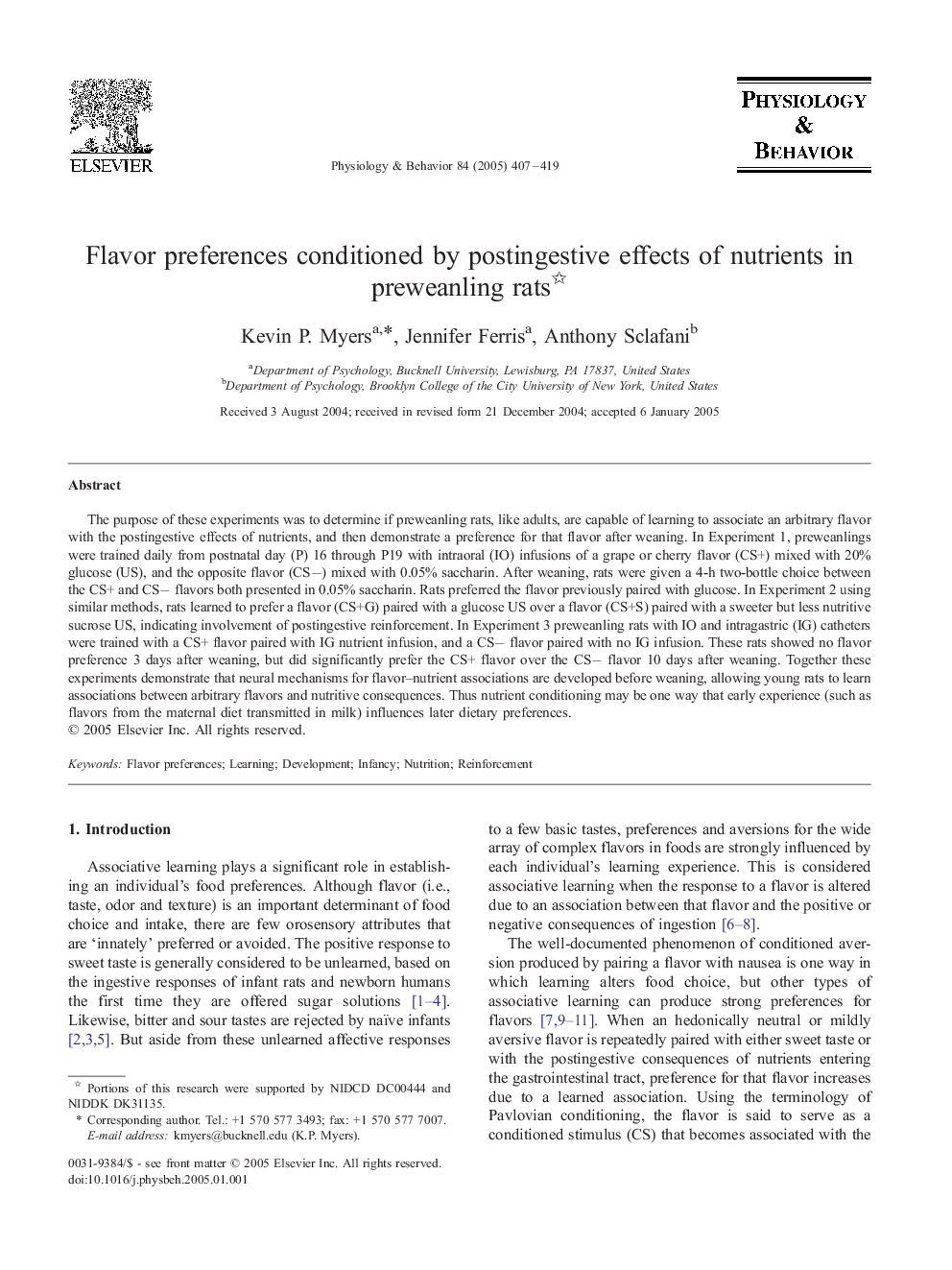| کد مقاله | کد نشریه | سال انتشار | مقاله انگلیسی | نسخه تمام متن |
|---|---|---|---|---|
| 9149759 | 1166436 | 2005 | 13 صفحه PDF | دانلود رایگان |
عنوان انگلیسی مقاله ISI
Flavor preferences conditioned by postingestive effects of nutrients in preweanling rats
دانلود مقاله + سفارش ترجمه
دانلود مقاله ISI انگلیسی
رایگان برای ایرانیان
کلمات کلیدی
موضوعات مرتبط
علوم زیستی و بیوفناوری
بیوشیمی، ژنتیک و زیست شناسی مولکولی
فیزیولوژی
پیش نمایش صفحه اول مقاله

چکیده انگلیسی
The purpose of these experiments was to determine if preweanling rats, like adults, are capable of learning to associate an arbitrary flavor with the postingestive effects of nutrients, and then demonstrate a preference for that flavor after weaning. In Experiment 1, preweanlings were trained daily from postnatal day (P) 16 through P19 with intraoral (IO) infusions of a grape or cherry flavor (CS+) mixed with 20% glucose (US), and the opposite flavor (CSâ) mixed with 0.05% saccharin. After weaning, rats were given a 4-h two-bottle choice between the CS+ and CSâ flavors both presented in 0.05% saccharin. Rats preferred the flavor previously paired with glucose. In Experiment 2 using similar methods, rats learned to prefer a flavor (CS+G) paired with a glucose US over a flavor (CS+S) paired with a sweeter but less nutritive sucrose US, indicating involvement of postingestive reinforcement. In Experiment 3 preweanling rats with IO and intragastric (IG) catheters were trained with a CS+ flavor paired with IG nutrient infusion, and a CSâ flavor paired with no IG infusion. These rats showed no flavor preference 3 days after weaning, but did significantly prefer the CS+ flavor over the CSâ flavor 10 days after weaning. Together these experiments demonstrate that neural mechanisms for flavor-nutrient associations are developed before weaning, allowing young rats to learn associations between arbitrary flavors and nutritive consequences. Thus nutrient conditioning may be one way that early experience (such as flavors from the maternal diet transmitted in milk) influences later dietary preferences.
ناشر
Database: Elsevier - ScienceDirect (ساینس دایرکت)
Journal: Physiology & Behavior - Volume 84, Issue 3, 16 March 2005, Pages 407-419
Journal: Physiology & Behavior - Volume 84, Issue 3, 16 March 2005, Pages 407-419
نویسندگان
Kevin P. Myers, Jennifer Ferris, Anthony Sclafani,